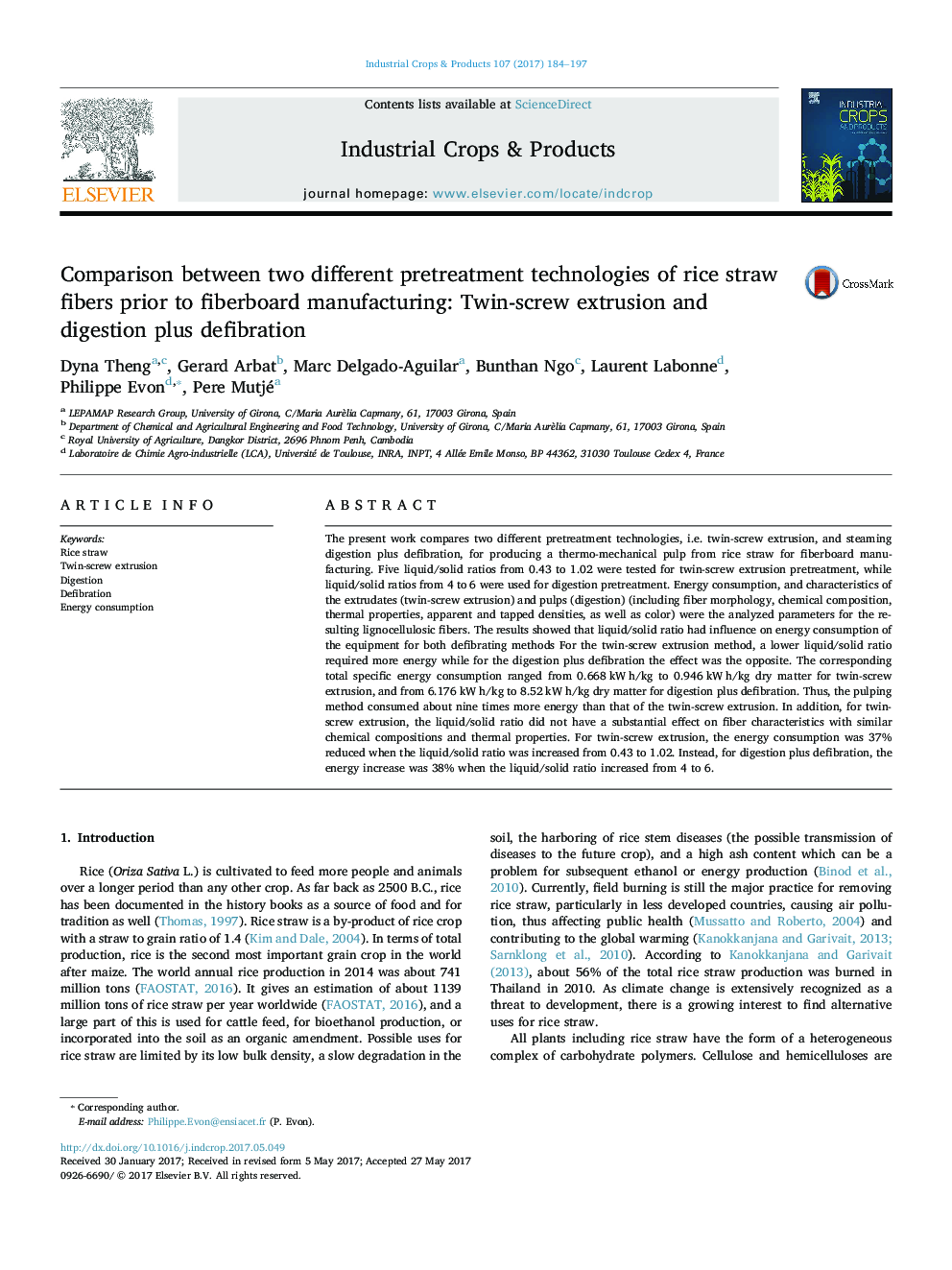| کد مقاله | کد نشریه | سال انتشار | مقاله انگلیسی | نسخه تمام متن |
|---|---|---|---|---|
| 5762089 | 1624803 | 2017 | 14 صفحه PDF | دانلود رایگان |
عنوان انگلیسی مقاله ISI
Comparison between two different pretreatment technologies of rice straw fibers prior to fiberboard manufacturing: Twin-screw extrusion and digestion plus defibration
ترجمه فارسی عنوان
مقایسه دو تکنولوژی پیش پردازش پیش از تولید فیبرهای نی چغندر قبل از ساخت تخته فیبر: اکستروژن پیچ دوقلو و هضم به همراه رقیق شدن
دانلود مقاله + سفارش ترجمه
دانلود مقاله ISI انگلیسی
رایگان برای ایرانیان
کلمات کلیدی
نی نی اکستروژن دوقلو، هضم، تعاریف، مصرف انرژی،
موضوعات مرتبط
علوم زیستی و بیوفناوری
علوم کشاورزی و بیولوژیک
علوم زراعت و اصلاح نباتات
چکیده انگلیسی
The present work compares two different pretreatment technologies, i.e. twin-screw extrusion, and steaming digestion plus defibration, for producing a thermo-mechanical pulp from rice straw for fiberboard manufacturing. Five liquid/solid ratios from 0.43 to 1.02 were tested for twin-screw extrusion pretreatment, while liquid/solid ratios from 4 to 6 were used for digestion pretreatment. Energy consumption, and characteristics of the extrudates (twin-screw extrusion) and pulps (digestion) (including fiber morphology, chemical composition, thermal properties, apparent and tapped densities, as well as color) were the analyzed parameters for the resulting lignocellulosic fibers. The results showed that liquid/solid ratio had influence on energy consumption of the equipment for both defibrating methods For the twin-screw extrusion method, a lower liquid/solid ratio required more energy while for the digestion plus defibration the effect was the opposite. The corresponding total specific energy consumption ranged from 0.668Â kWÂ h/kg to 0.946Â kWÂ h/kg dry matter for twin-screw extrusion, and from 6.176Â kWÂ h/kg to 8.52Â kWÂ h/kg dry matter for digestion plus defibration. Thus, the pulping method consumed about nine times more energy than that of the twin-screw extrusion. In addition, for twin-screw extrusion, the liquid/solid ratio did not have a substantial effect on fiber characteristics with similar chemical compositions and thermal properties. For twin-screw extrusion, the energy consumption was 37% reduced when the liquid/solid ratio was increased from 0.43 to 1.02. Instead, for digestion plus defibration, the energy increase was 38% when the liquid/solid ratio increased from 4 to 6.
ناشر
Database: Elsevier - ScienceDirect (ساینس دایرکت)
Journal: Industrial Crops and Products - Volume 107, 15 November 2017, Pages 184-197
Journal: Industrial Crops and Products - Volume 107, 15 November 2017, Pages 184-197
نویسندگان
Dyna Theng, Gerard Arbat, Marc Delgado-Aguilar, Bunthan Ngo, Laurent Labonne, Philippe Evon, Pere Mutjé,
